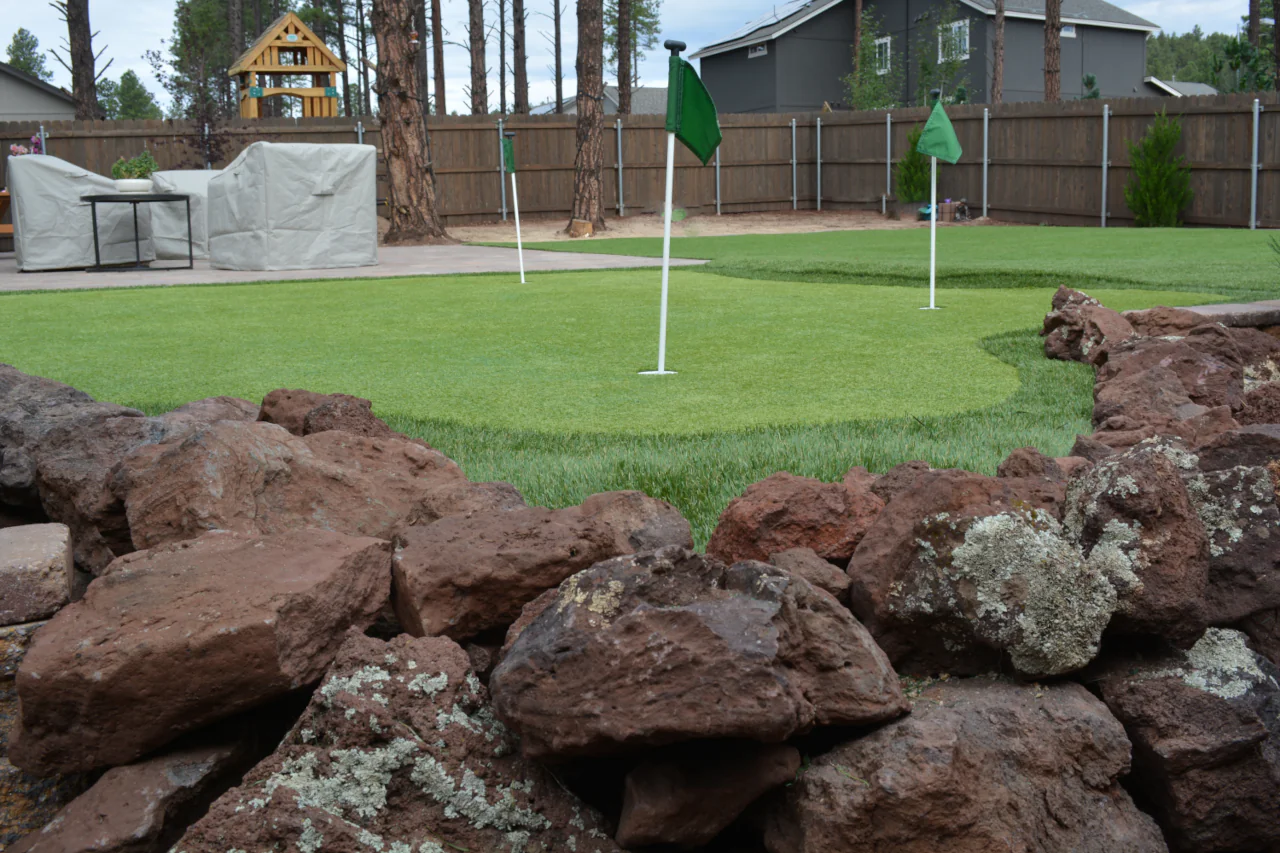How to Design a Three-Hole Practice Green

A three-hole practice green gives you a compact, fun way to sharpen your short game without consuming all your outdoor space. This guide walks you through a thoughtful layout, simple pin placement ideas, which synthetic turf types work best for a backyard putting green setup, and bite-sized practice routines. Sprinkle in a bit of imagination and a regular practice schedule, and you’ll be getting more confident strokes in no time.
CHOOSING THE RIGHT SIZE AND SHAPE FOR YOUR YARD
Start by identifying a flat or mild-slope section that doesn’t conflict with walkways or landscaping. A typical three-hole green can fit in 300–700 sq. ft., depending on how much spacing you want between the holes. Think of three areas that create interesting angles: a straightforward short putt, a mid-length shot across a subtle slope, and a challenging long-break putt.
If you plan a complete synthetic grass installation, pick a spot with strong sun and consider how the water will drain there. Proper base work keeps the surface smooth and helps the turf play like natural greens. If you’re working with limited space, offset the holes so each one feels distinct without needing much additional artificial grass.
SMART LAYOUT IDEAS TO ENHANCE PRACTICE
Vary distances: aim for one short-range hole (6–10 ft.), one medium (12–18 ft.), and one long-range hole (20–35 ft.). That range forces different putting speeds and focus.
Use subtle contours: small bumps or gentle low spots add interest without requiring major leveling.
Create approach area options: include a small chipping patch beside one hole so you can practice pitch-and-putt sequences.
Edge details: a low-profile roll-up edge or sand trap adds extra difficulty and clean edges.
Throughout the layout process, share your preferred installation style — whether you want a full synthetic turf base or a partial renovation — because artificial grass and artificial turf behave differently depending on prep work.
PIN PLACEMENT IDEAS FOR VARIETY
Move your pin locations each session. Move pins to the front, middle, and back to create fresh angles. A simple system: A-B-C rotation where A = forward, B = middle, C = back-third. For extra challenge, place a temporary pin on the outer edge of a slight slope to strengthen break and pace judgment.
Use removable cups or movable pin sets so you can swap pin positions without damaging the turf. Changing pins on synthetic turf putting greens is quick and lets you mimic tournament challenges in a Edmonton backyard setting.
SHORT PRACTICE ROUTINES FOR BUSY LIVES
No need for hour-long sessions. Try three simple drills that fit the three-hole layout:
Speed Ladder (6–12 minutes): Start at the short hole and putt three balls from each range—short, mid, long—focusing on a steady stroke length for each distance.
Break Read Drill (8–12 minutes): From a single starting point, putt to each of the three holes with the pin in a different spot. Work on judging the break and modifying your stroke pace.
Pressure Finish (5–8 minutes): Make two-putt rounds around the three holes. If you complete the circuit successfully, reward yourself with a harder approach next round.
Short routines like these keep your improvement consistent and make practice easy to maintain. Mix them throughout the week for well-rounded improvement.
